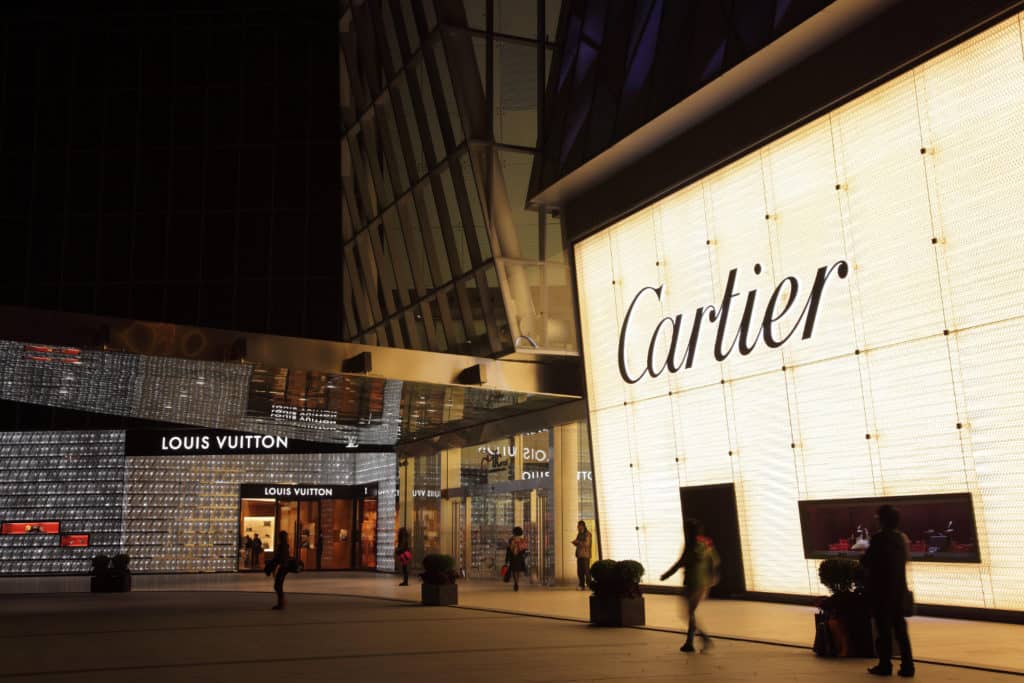Luxury brands have been closing up shop in China recently, according to the South China Morning Post (SCMP). The phenomenon of building brick-and-mortar stores that “originated in China,” has now reversed itself, as more retail stores are closing up shop and moving online.
China was envisioned by the European luxury brands as the next retail hub as early as the year 2000. With the One-Child Policy producing an army of rich spenders, teens and singles alike flocked to these stores like cash was never a concern.
The influx of Western brands flooding the Chinese market swelled by 2014 with about 10 of the top luxury retail brands putting up as many as 1,320 physical stores. People have money to spend. The economy was bursting at the seams, and no one expected that the rise of retail apps installed in China’s own roster of smartphone products would speed up the retail burst.
They should have seen the problem as early as 2013 when sales were already slowing on the Mainland. The luxury goods market, worth 3 trillion Hong Kong dollars (or 380 billion US dollars), did not produce any profit for the fiscal year 2016. The term that SCMP used was “flat” upon quoting business firm Bain & Company. And they already described the retail sales trend as “modest.”
Much of the shift is attributed to e-commerce, namely the rise of local e-commerce platforms like Alibaba. Alibaba was reported to have earned US$7.4 billion for the second quarter of 2017, 56% higher than in the same quarter of 2016. Its closest competitor, JD.com earned its keep for the same period a total of US$13.7 billion. This was 43.6% higher compared to the same quarter of 2016.
With the competition for e-commerce in China getting intense, JD has pumped US$397 million in investment to the e-tailer Farfetch. This partnership has the goal of cornering the luxury-spending crowd in China. Their initial reported venture is a deal to sell items from the Saint Laurent brand online. Alibaba, on the other hand, is reported to be launching its own website spinoff for the well-heeled crowd. They called it the Luxury Pavilion. One of the confirmed brands expected to be featured on the e-commerce platform is Burberry.
E-tailing is becoming the trend in China as far as local e-commerce platforms are concerned. Defined as “the sale of goods and services through the internet,” it has started leaning towards the definition of having the business conducted online without a physical store presence. There will be distribution centers where buyers are expected to pick up their purchases.
Due to the absence of a brick-and-mortar store, most e-tailers have relied on strong branding. This explains the decision of JD and Alibaba to take the luxury brands route. “Only 14% of fashion brands in China offer in-store product availability online,” according to Liz Flora of the business intelligent firm L2. She added that “5% allow users to pick up online purchases in the store and none allow in-store returns of online purchases.”
Keeping an in-line store in highly urbanized cities like Shanghai and Hong Kong has caused some luxury brands to bleed cash. Since January 2017, Louis Vuitton and Hermes have closed a combined total of 62 stores. Even luxury men’s clothing line Dunhill failed to see the opportunity to recoup their investment online despite being one of the first high-end brands to enter the Chinese market.
One of the confirmed survivors in this so-called retail apocalypse is Cartier. Flora attributed Cartier’s ability to hang on to its “omni-channel and concierge service capabilities” by offering customers the choice between “in-store pick up and online store appointment reservations.” Other brands that have weathered the storm are Lacoste and Hugo Boss.
Stay up-to-date with the latest commentary and insights on FreightTech and the impact to the markets by subscribing.











